BF Project: 1962 Morris Mini Cooper 997
A while back, we listed and sold our Lotus Elan barn find right here on the site. What we failed to mention was that when we found and purchased it, it came as a package deal with two other barn finds. We sold that one in part to free up space and make a budget for getting the other two finds back on the road. I’ve finally had time to dive into one of the cars and thought it was finally time to not only reveal it but also document the work that’s already begun and what all is going to get done. So, here it is! This 1962 Morris Mini Cooper is a highly original car that still retains its rare 997cc Cooper-tuned engine and all of its other Cooper specific parts. If that doesn’t make it rare enough, it’s also a left-hand drive car!
When the British Motor Company released the Mark I Mini in 1959, it wasn’t ever intended to be a performance car. It was purely designed to be an economical and cheap car to build. That being said, some of the engineering that went into it is extremely novel and likely continues to influence how front-wheel drive cars are being built today. While BMC saw it as a way to get price-conscious domestic consumers on the road, others saw the car as a potential platform for something far more fun than daily commuting. Enter, John Cooper, the man behind the Mini Cooper revolution. Since he was friends with Sir Alec Issigonis, who was responsible for creating the Mini for BMC, Cooper had an in with the company and an engineer that knew what could be improved. With Issigonis’ understanding of the suspension design and Cooper’s engine-building expertise, they set out to build a performance version.
The Mini’s novel but rudimentary suspension design and tiny curb weight meant getting the car to handle better didn’t take much work. Higher performance shocks were about all the car needed to get the suspension track ready. What the car really needed was more grunt and better brakes. The stock Mini was powered by an 849cc version of the A-series engine with drum brakes at all 4-wheels. The 20 horsepower produced by the 849 simply wasn’t going to cut it, so the engine was enlarged to 997cc which brought power up to 55 hp. That still isn’t a ton of power, but a huge jump over stock numbers. And with a curb weight under 1,300 pounds, you really don’t need a huge amount of power. Paired with a quick ratio gearbox and 10-inch wheels, these early Coopers were surprisingly quick. To make sure you could slow it down, the front brakes were upgraded to 7-inch discs. They proved to be such fun and capable little cars that it was decided to build an even more powerful variant, the Cooper S, that would go on to win a number of rallies and races.
Cooper initially planned on building just 1,000 cars, but they proved so popular that they end up building over 12k cars. BMC would go on to license the Cooper name and it eventually became synomus with the Mini. Under BMC (and later Rover) the Cooper become more of a cosmetic package and less about performance, which is in part what makes finding an early Mini Cooper so incredible. Think of it like finding an early Shelby Mustang versus finding a Ford-built Shelby Mustang. Both are desirable and fun, but there’s just something truly special about the ones actually built by Shelby. Now that I’ve worked on our Mini, I can tell you there’s far more in common with an early Cooper and a Shelby than you’d ever expect. This brings me to our Mini and what’s been done so far.
When it arrived, we were stunned by just how solid and original the car was. We’ve looked at a few Minis over the years and typically they have serious rust issues and have been modified. While ours has surface rust, I’ve yet to find any serious issues. And the car not only retains its matching numbers engine and transmission, but it still has its original 7-inch brakes and original interior. Since the car stayed in production from ’59 all the way to 2000, newer improved parts have a tendency to find their way onto older cars. It makes sense, people want to improve performance and newer parts tend to be cheaper. The problem is that what makes early cars special are the parts that people often change out. Upgrading to a 1275cc engine is popular, but changes the entire character of the car. And of course, the 7-inch brakes almost always get replaced with larger ones. Since our car was parked in the late ’70s, it managed to retain all of these hard-to-replace bits. It is a bit of a double edge knife though, as it also means the car is in need of service, so we’ve decided to go ahead and refresh it.
The 997 engine was only in production for a short period of time and was replaced by the short-stroke 998 by ’64. Most people drove their Mini Coopers hard, so when the 997 inevitably broke down it made more sense to get a 998 or one of the larger A-Series engines rather than rebuild the original. I’ve spoken with a few Mini specialists and they’ve all expressed surprise when they learn that our car retains its original engine and that we’ve managed to get it running. As a matter of fact, it runs nicely, but it’s leaking oil from just about every seal. The previous owner also thought it would be cool to paint parts of the engine Ford Blue, so we decided to pull the engine out of the car to clean it up and reseal it. While workiong on this it, I’ve been downright impressed with how these little cars are put together. Rather than pull the drivetrain out through the hood, which you can do, I decided to drop it out the bottom of the car with it still attached to the subframe.
This required getting a QuickJack to lift it higher, but it was super quick to do and means I can refresh the entire front suspension and brake components outside of the car on the workbench. I’ve already got the engine out and stripped down. We ordered a full engine gasket kit and they include a new copper head gasket, so I figured I might as well take the head off so we can service it and install the new gasket. We are going to drop the head off at the machine shop to have it inspected. The plan is to do any work that needs to be done to ensure it runs its best while trying to avoid losing too much of the car’s originality. It’s honestly a challenge to know what to replace, what to restore, and what can just be reused, but it’s an exciting adventure.
While we wait for parts to start arriving for the engine, we’ve removed the carpet and are going to be pulling the seats out tomorrow. We want to inspect the entire floor, clean it, and treat any surface rust we come across. While we have the interior out, we are also going to clean everything and replace any worn out items. The odometer shows just 39k miles and I think that could very well be the actual mileage, so I’m not expecting to have to replace much on the inside.
So far, working on this Mini Cooper has been a very special experience. There are a lot of standard Minis out there, but there really aren’t that many Mark I Coopers left and finding a 997 that hasn’t been customized is almost unheard of. I try to spend at least a few minutes each day working on it and each time I feel like we’re one small step closer to ensuring this special car will be on the road again where it can be enjoyed. There’s also a sense that this car needs to be preserved, with so few remaining, so we are going to try to do our best at keeping it original and documenting every part of the car. I’m going to try and do as regular of updates on our progress as possible and we are also thinking about doing a vlog on it. If that’s something you’d like to watch, let me know in the comments and if there’s an outpouring of interest in it, I’ll setup the camera up! Be sure to stay tuned for future updates on our Cooper and wish us luck.
Auctions Ending Soon
 2006 Ford Mustang Saleen S281 SCBid Now1 days$15,000
2006 Ford Mustang Saleen S281 SCBid Now1 days$15,000
 2002 Subaru Impreza WRXBid Now4 days$100
2002 Subaru Impreza WRXBid Now4 days$100
 1975 Chevrolet Corvette ConvertibleBid Now4 days$3,000
1975 Chevrolet Corvette ConvertibleBid Now4 days$3,000
 1964 Ford F-100 Camper CustomBid Now4 days$500
1964 Ford F-100 Camper CustomBid Now4 days$500
 2006 Jeep Wrangler SportBid Now6 days$4,000
2006 Jeep Wrangler SportBid Now6 days$4,000


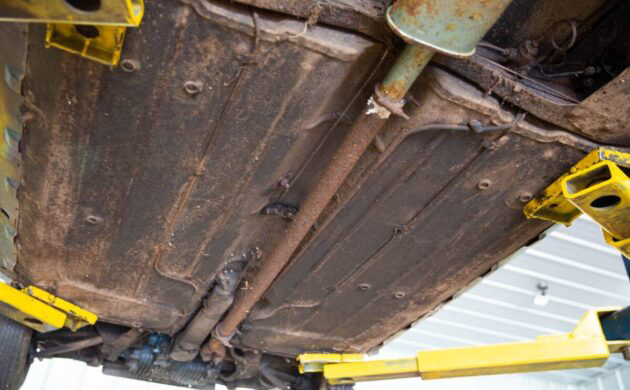

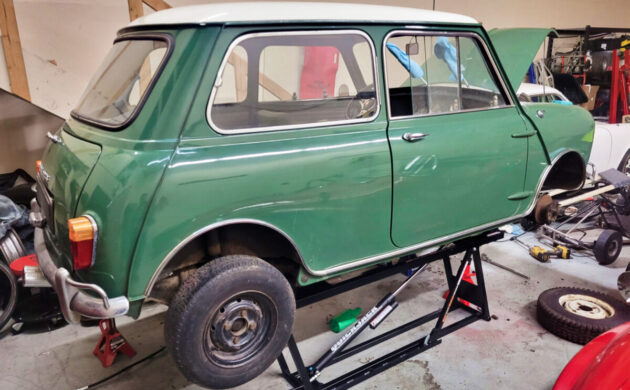
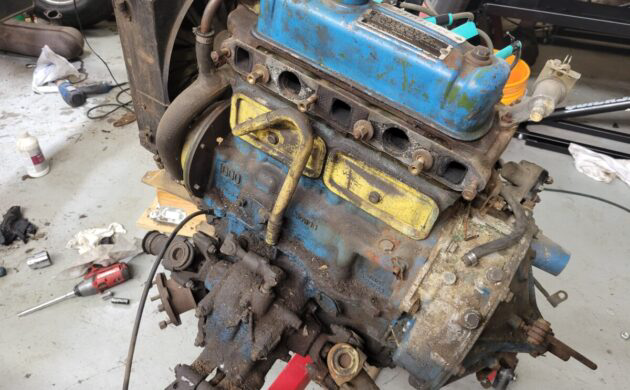

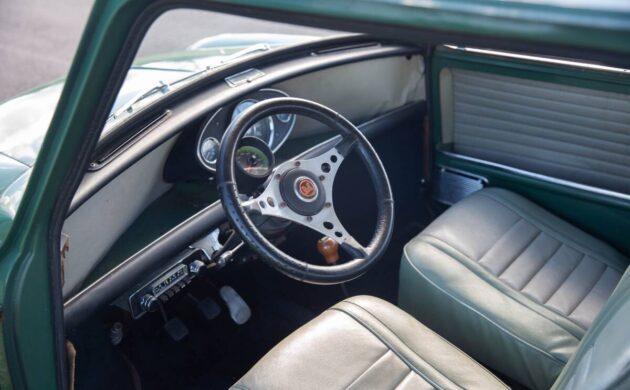
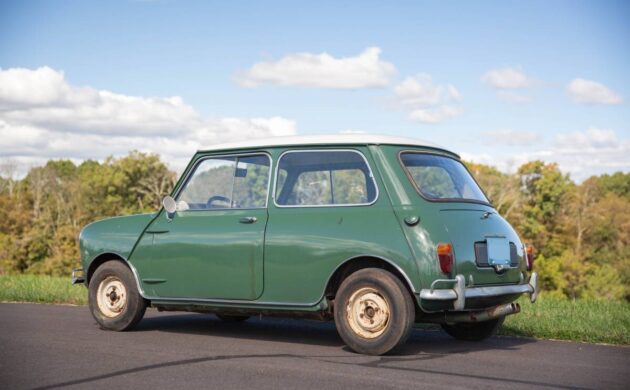

Comments
If you didn’t watch it yet Josh, Hagerty did a series on rebuilding a Mini engine.
https://youtu.be/M4DHcDrTHuQ
I hadn’t seen that yet. Thanks for sharing that, I’ll have to watch it!
A definite yes to a vlog 😃
I live in England (UK) and original Mk1 Coopers are rare as hen’s teeth here so it’s amazing to see an early unmolested example in the US !
The wheels’re mismatched; the one with the round holes is a Cooper one and the slot ones’re standard Mini. Cooper ones have wider rims and will take 165/70 tyres as a pose to the 145s on the standard car. Asymmetric Yokohamas are the biz…
The one mismatched wheel is the spare. When the car was shipped to us, the one wheel wouldn’t hold air long enough to even load it on the trailer. Thankfully the spare was in the trunk and holds air.
We have all four original Cooper wheels with their original 997 caps. We are still up in the air on whether we want to have the original rims restored or if we should leave them alone and just order a set of reproduction wheels to drive on. Once we decide on what to do there, we will have to pick out a set of tires. The Yokohamas sound like a good choice, but we can get modern Dunlops that are just like the original 520-10s that would have been on the car when new. As you can see, we have a lot of hard choices to make!
I had mine blasted and then stove-enamelled Old English White. I only ever had drum brake Minis, so the round-hole out-set wheels were fine for me; I moved them from car to car (they sit pretty much in line with the bodywork, but don’t – quite – require arches). The disc brake ones were in-set because the hub assemblies stuck out farther. Never had a set of those wheels – and you’ve got me wondering whether the round-hole ones are from 1275 Coopers and not the others.
Love this! I especially like the sympathetic restoration route you’re taking. Please update frequently!
My Dad had a little later 1071 Cooper S. What a blast that was to drive!
Reliability was not great. The dealer had to replace the engine under warranty.
Watched a car show where they put a 200hp Honda motor and drive train in it. Really kind of wanted one like that. Would it be considered a sin to do that to this car?
I’d say yes.
I would love to watch this Cooper get restored. And let me know when you’re ready to sell it..
Whatever you do, don’t try and convert it to AWD with a Toyota drivetrain….you’ll never finish it.
I also have a 1962 997 Cooper. Australian kit version so the interior is more plain. The 997 motor was long blown up and it came with a 998 Cooper motor. Now has a 1275. Hold onto that 997 engine. Very rare. May be worth reinstalling in the future.
https://i.imgur.com/s2ZVAAs.jpg
Very nice kg. I like that color.
The plan is to get the 997 sorted so that we can experience it the way it left the factory. As of right now, we don’t plan on swapping the engine out, but if we do the 997 will definitely stay with the car.
“Nurburg White/Shadow Blue”. The original VIN is intact.
https://i.imgur.com/kgWCSkh.jpg
The 998 that it came with was quite revvy and fun, but it was tired and failed after 5 years of road-rallies. The 1275cc upgrade has tons of torque but isn’t as fun in some ways. I sold the non-matching 998 and then found out how scarce a real Cooper 998 and remote change linkage is. Oops.
While you are on the engines put hardened valve seats in them. Nice project. Should be fun.
Where did you get that lift used on mini
It’s a QuickJack.
Interesting. The small QuickJack (3500?) will fit? Or did you have to remove the front wheels?
I was able to fit it without taking the wheels off. It was tight up against them, but gave just enough room for it to work.
I used to grab the front end and lift it over the sub frame by hand. The are pretty light.
As an old frrt I have to ask “what is a Blog” and, when and if it is set up, I would love to access it.
A vlog is a video blog, so think of this post but in video form. I actually recorded the first one today and once it’s edited, I’ll upload it to our YouTube channel and then share it here on the site so you can watch it.
From personal experience, all Minis like this are a hoot to drive. Even the vans and pickups.
Practical, spacious (even considering how small they are) and drive like mini go-karts. Just point and go.
On the plus side, parts are still available for all variants on this side of the pond. Even complete shells can still be got. Quality parts and not expensive.
Whatever ends up happening to this one, it’ll be special, considering how few there are left, even here in the UK.
IIRC, more Austins that than Morris’s were imported to Canada, but, after all these years, I could have that AB. In early summer of ’63, I bought a used 1962 997 Cooper whose owner end-overed his buddy’s Porsche, and needed to free up some money. Upon purchase, I made the mistake of accepting the dealer reassurances, and set about setting the tire pressures to the 18psi per the owner’s manual, and came perilously close to rolling it on a big, fast curve, within a half-mile of the dealer’s. It was a very big, very fast curve. At 32psi, it felt on rails. Having owned the car for 24 hours, and taking all my friends for a QUICK spin. I was totally astounded to find I had put on over 1100 miles on it, most of it at 80 or 90 mph.
The wheels rims with protruding centres belonged to the 1070 S, and, I think, the 970S. A lot of 997’s were sold in Canada, and there was never a discussion of engine fragility. Although the speedo only registered to 100, I continually pegged the needle at about 106, and those speedos were said to be pretty accurate. At various times, I owned a 997, 998,1070, 970 (engine only), and a number of 1275s, and, for racing the Alitalia series, in 1967, built a 2.2″ stroked 848cc Cooper S that turned in excess of 11,000, but, with a 4.11 final drive 4-speed, it had to be rowed up the back straights at Mosport & Harewood Acres ( 3-4-3-4-3-4, etc). One thing you had to watch is that the 7″ rotors wore like crazy, and could pretty well disappear in nothing flat, so 998s were the minimum. You could lighten the car just by taking it for a hard run for a few laps. (Joke) There was one thing I always paid particular attention to: the aluminum pressure relief valve and spring. If the parts were in good nick, cold start oil pressure was 95 psi, but bad parts resulted in 25 psi. One of our competitors scored some lubricant sponsor money by signing an affidavit that SS SUPERSLICK bumped his oil pressure from 25 to 45 psi. Everyone was kind, and didn’t say much. Drove a 998 Cooper from Oshawa to Chicago, through a storm that closed down North America, in early 1967, and it took 25 hours. My late wife and I dated in that Cooper, I proposed in that car, drove the last 100+ Ontario winter miles in that car, on 3 cylinders (valve) on a journey to introduce my bride to my 85+ Ukraniane Baba, who let her 55 year old second husband chase her, and catch her, and marry her. She had land, he wanted it, he then died, and she was highly amused. She died in her 90s, I believe.
The Cooper? No parts available, so drove it back on 3 cylinders, with the spark plug & ignition wire removed. Great adventures!
Do yourself, and your car, huge favour: while the engine is in pieces, send it out and get it balanced to aircraft engine specs. It will pull away, in high gear, at low revs. Smooth as silk.
Went to the wrecking yard to buy a used 1275 for my bugeye… saw a ’73 mini off in the corner and came home with that instead. Paid a whole $250.00 for it. Ran and drove just fine. Turned out to have a clubman 1300 in it. I put a Webber on it and Paddy Hopkirked everything I could find. Solid suspension and auto crossed that little guy like it was on rails. Used to get teased about the inside rear wheel lifting off the ground. (Like a dog lifting its leg). Sat four adults no problem. Often wonder where it is today. Wish I still had it…